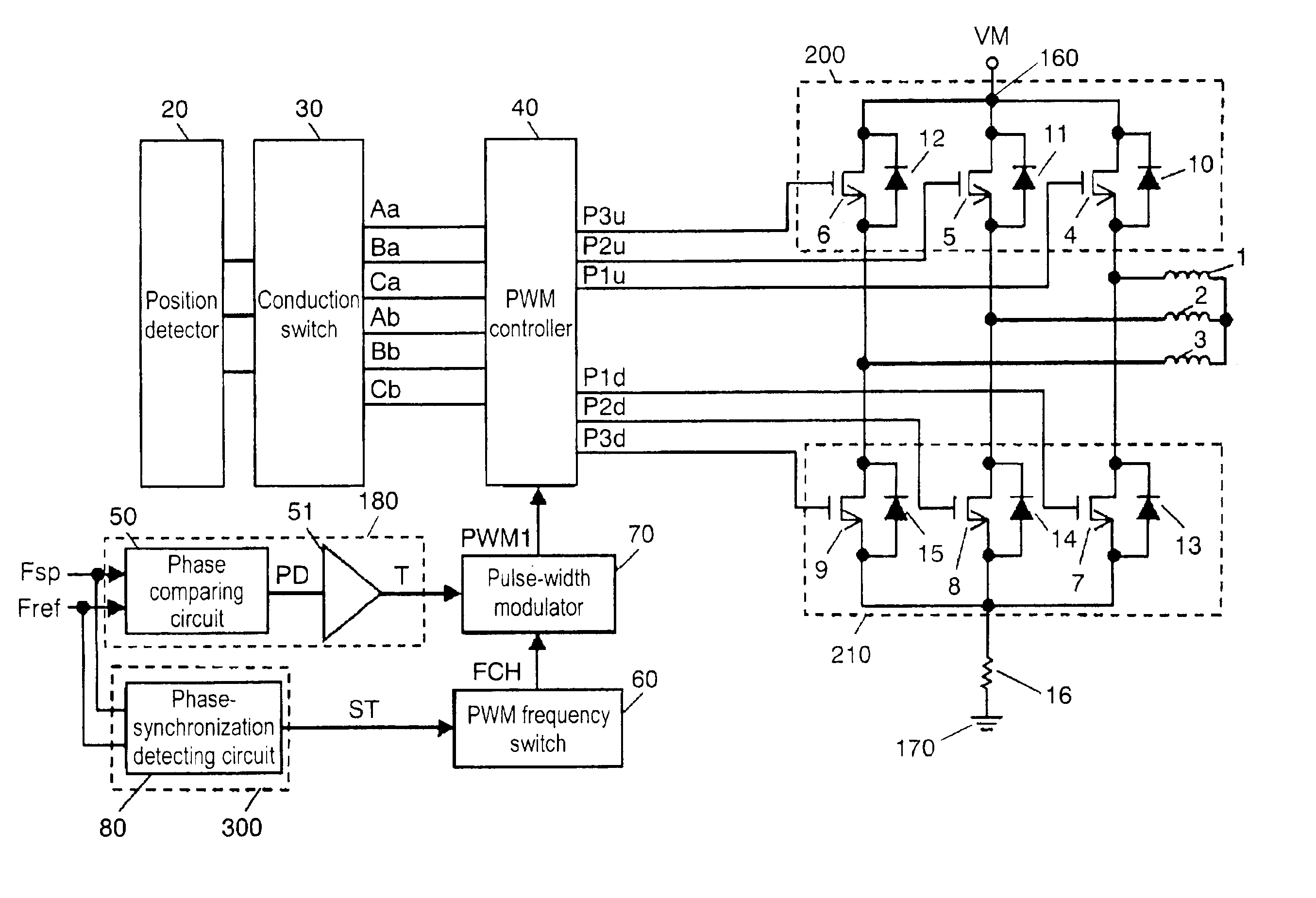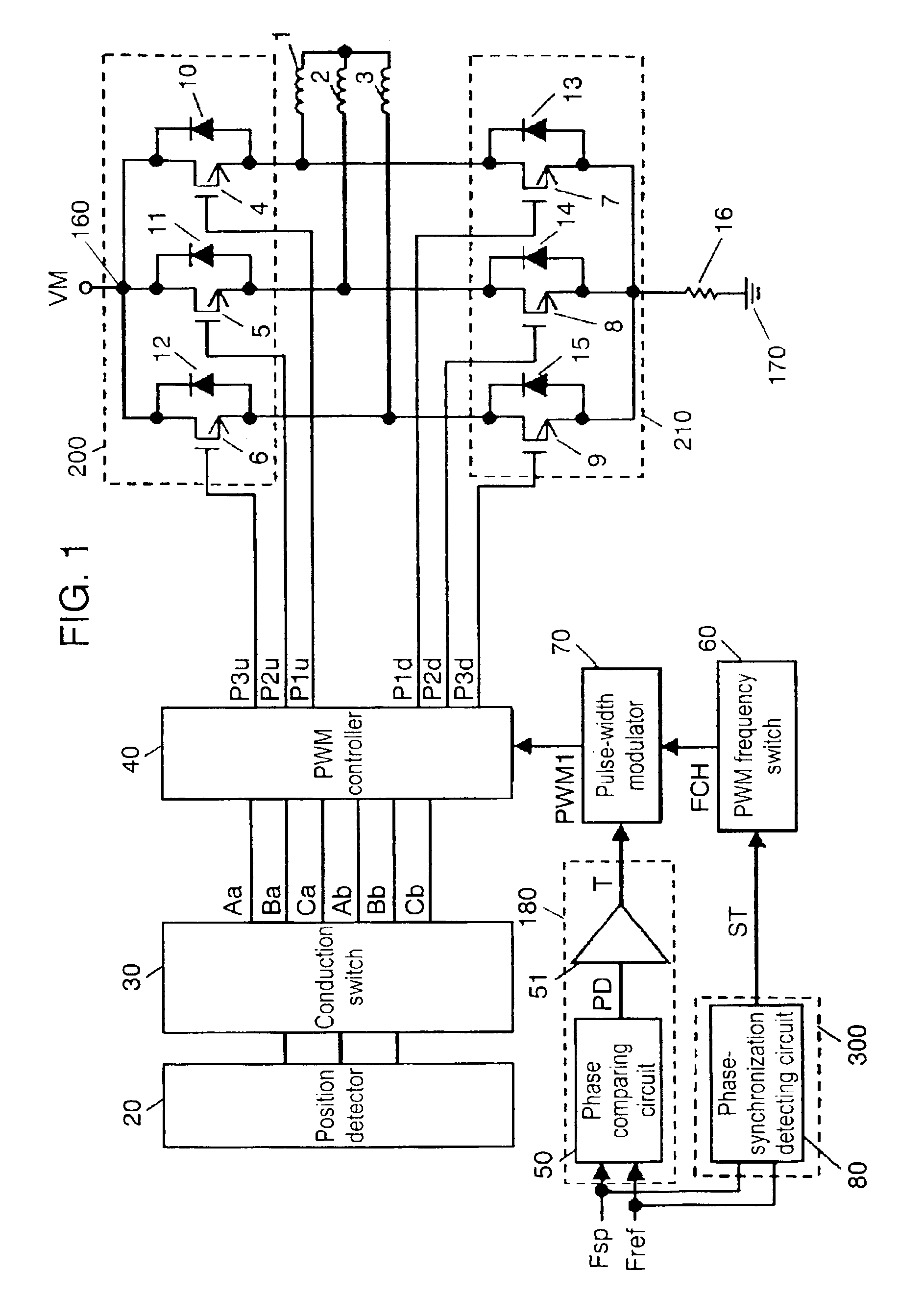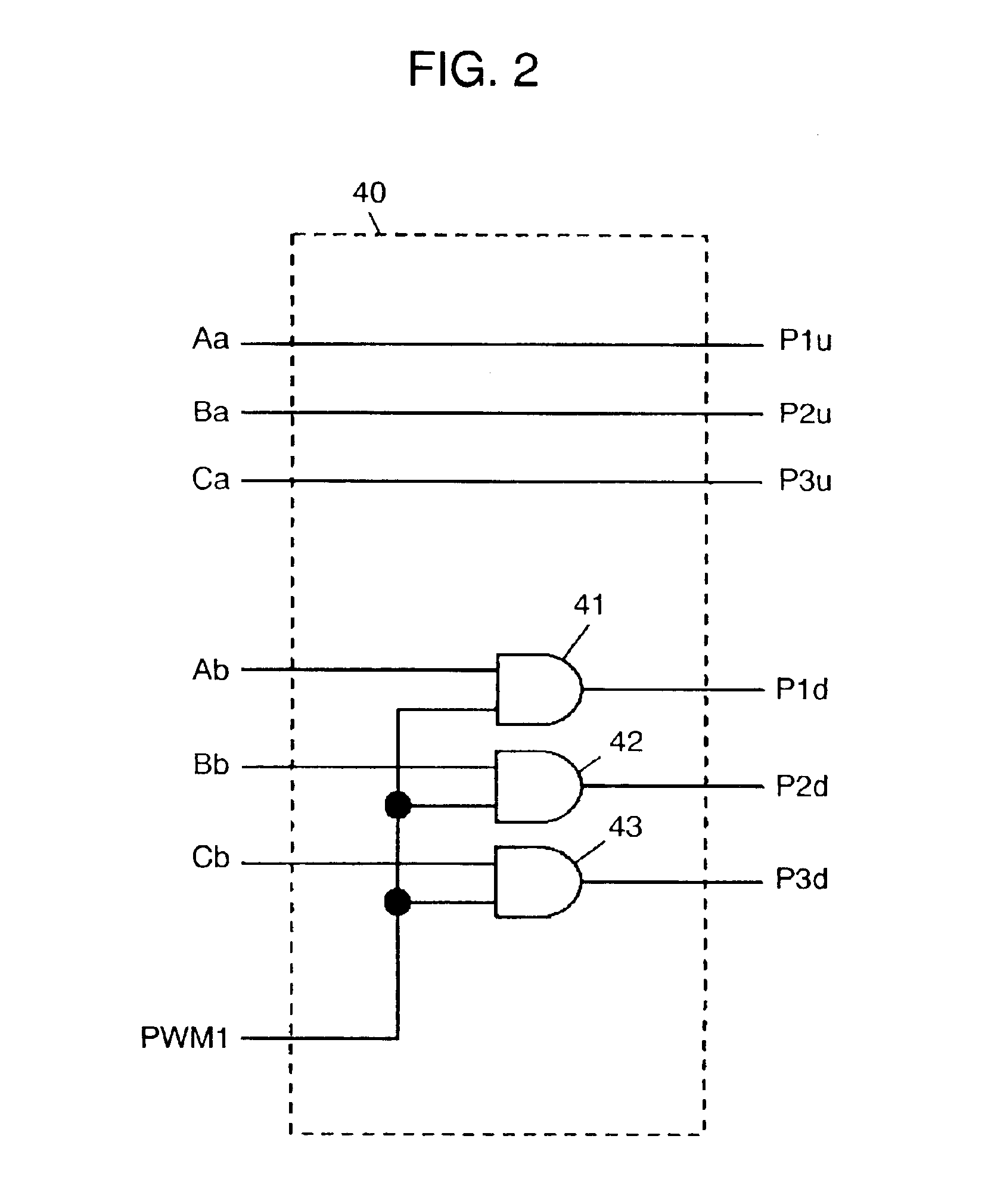Motor driving apparatus and motor using the same
a technology of motor driving and motor, which is applied in the direction of motor/generator/converter stopper, dynamo-electric converter control, stopping arrangement, etc., can solve the problems of increasing power loss (switching loss) generated at on/off of the driving transistor, reducing reliability, and reducing power loss. , to achieve the effect of reducing power loss and achieving higher rotational accuracy
- Summary
- Abstract
- Description
- Claims
- Application Information
AI Technical Summary
Benefits of technology
Problems solved by technology
Method used
Image
Examples
exemplary embodiment 1
FIG. 1 shows a circuit diagram of a motor driving apparatus in accordance with the first exemplary embodiment of the present invention. FIG. 2 shows a circuit diagram of a PWM controller in the motor driving apparatus. FIG. 3A through FIG. 3C illustrate an operation of the motor driving apparatus. FIG. 4A through FIG. 4C show timing charts of signals of the motor driving apparatus. FIG. 5A and FIG. 5B show waveforms of driving coil currents of the motor driven by the driving apparatus.
In FIG. 1, a three-phase motor is taken as an example of a brush-less motor (hereinafter simply referred to as a motor) driven by the driving apparatus of the present invention. The three-phase motor includes driving coils 1, 2, and 3 which are wound on respective stator cores disposed opposite to rotor magnets (not shown) of the motor. Respective drains of driving transistors 4, 5 and 6 are coupled to first power source line 160 connected to power source terminal VM. A source of transistor 4 is connec...
exemplary embodiment 2
FIG. 6 shows a circuit diagram of a motor driving apparatus in accordance with the second exemplary embodiment of the present invention. FIG. 7 shows a circuit diagram of a PWM controller in the motor driving apparatus. FIG. 8A through FIG. 8C illustrate an operation of the motor driving apparatus. FIG. 9A through FIG. 9C show timing charts of signals of the motor driving apparatus. FIG. 10A and FIG. 10B are schematic drawings showing current paths of driving-coil currents of the motor driven by the driving apparatus.
In this second embodiment, similar elements to those in the first embodiment have the same reference marks, and the descriptions thereof are omitted here. In FIG. 6, the second embodiment differs from the first one in the following points: A first input terminal of comparator 53 receives an output from error-amplifying circuit 51 of torque instructor 180. A second input terminal of comparator 53 is coupled to a second terminal of reference power supply 54 of which first...
exemplary embodiment 3
FIG. 11 shows a motor and its driving apparatus in accordance with the third exemplary embodiment of the present invention. In FIG. 11, driving coils 1-3 of motor 150 are coupled to driving apparatus 100, which is connected between first power-supply line 160 connected to power-supply terminal VM and second power-supply line 170 connected to the grounding.
Driving apparatus 100 uses the driving apparatus described in the first or the second embodiment, so that the motor in accordance with the third embodiment can utilize the advantages produced in the first or the second embodiment.
As the first through the third embodiments tell, the present invention provides a motor driving apparatus that can reduce the power loss caused by PWM chopping (switching) during the acceleration of a motor, and drive the motor accurately at a high enough PWM frequency during the regular rotating period. The present invention also provides a motor using the foregoing driving apparatus.
A PWM controller is e...
PUM
 Login to View More
Login to View More Abstract
Description
Claims
Application Information
 Login to View More
Login to View More - R&D
- Intellectual Property
- Life Sciences
- Materials
- Tech Scout
- Unparalleled Data Quality
- Higher Quality Content
- 60% Fewer Hallucinations
Browse by: Latest US Patents, China's latest patents, Technical Efficacy Thesaurus, Application Domain, Technology Topic, Popular Technical Reports.
© 2025 PatSnap. All rights reserved.Legal|Privacy policy|Modern Slavery Act Transparency Statement|Sitemap|About US| Contact US: help@patsnap.com



